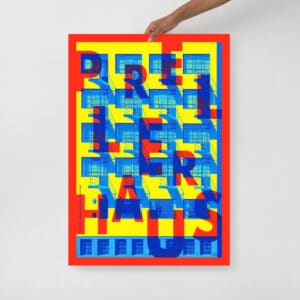The ideas of the Bauhaus movement, with their emphasis on simplifying and unifying design principles, were expressed in the use of the square, circle and triangle. These three shapes, which had been revered for centuries, became the visual tool used to express the core principles of modernist design.
The form of the square was central to the Bauhaus movement. It was seen as an expression of the ‘form follows function’ ethos, which argued that the purpose of a design should dictate its form. Squared shapes are efficient and practical, making them a perfect visual representation of this concept.
The circle suggested unity, since no matter which way you turn it, it looks the same. It was used to represent a coming together of design principles. The circles used in Bauhaus art were also suggestive of the harmony and perfect order that the philosophy championed.
The triangle represented balance and progression. Its three points and angles symbolized the combination of past, present and future. This idea of combining and advancing the past can be seen in the way the Bauhaus movement recycled and reimagined forms and ideas.
The square, circle and triangle are all still widely used in design today, showing the lasting impact of the Bauhaus movement. Its use of these shapes to represent a ‘Universal Language’ has helped to revolutionize design and graphics across the globe. These shapes are used in marketing materials, logos and websites, to express precision and modernity. Their significance in the modern world remains clear, and testament to the timelessness of the legacy of Bauhaus.
Share This :



